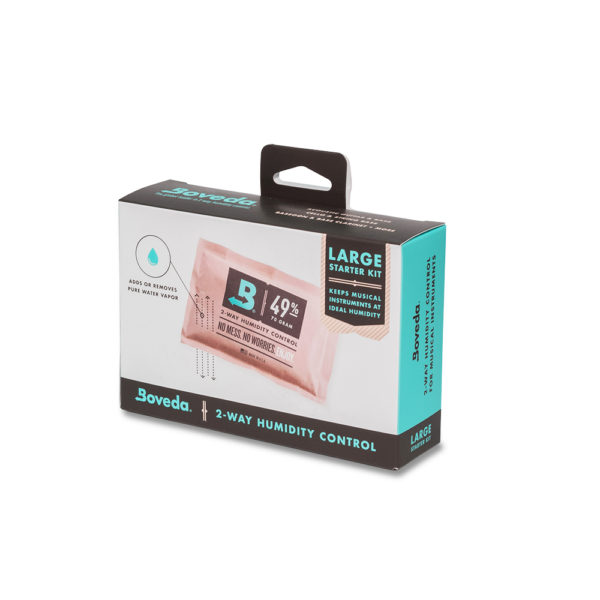At The Stockist, our mission is to ensure that our customers not only enjoy their instruments at the time of purchase but continue to cherish and appreciate them for many decades, passing them down for future generations to enjoy. Acoustic guitars, especially high-end models, require dedicated care and attention. Proper maintenance significantly impacts the appearance, sound quality, and lifespan of these beautiful instruments.
In this blog, we aim to educate our customers on the essential measures and precautions necessary to keep their guitars in excellent condition, minimizing the need for repairs. Remember, the more you invest in a guitar, the more maintenance it will require. By following our guidance, you can ensure your instrument remains a treasured piece of art for years to come.
Understanding Humidity and Its Impact on Acoustic Guitars in India
Humidity, the measure of water vapor in the air, plays a crucial role in the maintenance and performance of acoustic guitars. For guitar enthusiasts and professionals in India, where climate conditions vary dramatically across regions and seasons, understanding how humidity affects acoustic guitars is essential for preserving their sound quality and longevity.
What is Humidity?
Relative Humidity (RH): The amount of water vapor present in air expressed as a percentage of the amount needed for saturation at the same temperature. RH is a critical factor for wood instruments, as it determines how much moisture the wood will absorb or release.
Absolute Humidity: The total mass of water vapor present in a given volume or mass of air, usually measured in grams per cubic meter. While absolute humidity gives a measure of the actual water vapor content, relative humidity is more relevant for instrument care.
Why Humidity Matters for Acoustic Guitars
Wood’s Hygroscopic Nature: Wood, the primary material of acoustic guitars, is hygroscopic, meaning it absorbs and releases moisture based on the surrounding environment. This characteristic causes the wood to expand and contract, impacting the guitar’s structural integrity and tonal quality.
Impact on Sound Quality: Changes in humidity can cause the wood to expand or contract, affecting the guitar’s tone, intonation, and overall playability. A well-maintained guitar will produce a rich, balanced sound, whereas a poorly maintained one may sound dull or out of tune.
Structural Integrity: Prolonged exposure to improper humidity levels can lead to cracks, warping, and other structural issues. This damage can be costly to repair and may permanently affect the instrument’s performance.
Ideal Humidity Levels for Acoustic Guitars
The expansion and contraction caused by changes in relative humidity are at the core of most issues you’ll encounter with an acoustic guitar. Typically, guitars are built at humidity levels between 40-45% relative to a room temperature of 22 degrees Celsius.
To keep a solid wood acoustic guitar in optimal condition, it should be maintained within a safe relative humidity range—about 0-5% below to 10-15% above the humidity level at which it was constructed. When the guitar moves outside this range, it begins to expand or contract, leading to potential damage. Notably, dehydration accounts for around 90% of climate-related repairs.
- When wood loses moisture, it shrinks.
- When wood gains moisture, it expands.
Optimal Range: The ideal relative humidity for storing and playing acoustic guitars is typically between 40% and 45%. This range helps maintain the wood’s natural equilibrium, preventing it from absorbing or releasing too much moisture.
Effects of Low Humidity: RH below 40% can cause the wood to dry out, leading to shrinkage, cracks, and a change in action. Low humidity can cause the guitar top to sink, resulting in lower action and potential buzzing of the strings.
Effects of High Humidity: RH above 50% can cause the wood to swell, leading to warping, high action, and potentially mold growth. High humidity can make the guitar’s top rise, increasing the action and making it harder to play.
In summary, your guitar should maintain a relative humidity level between 40% – 45% to prevent damage and ensure longevity.
Humidity Challenges in India
India’s diverse climate poses unique challenges for acoustic guitar maintenance:
Northern India: Experiences extreme seasonal variations, with dry, cold winters and hot, humid summers. These fluctuations require constant monitoring and adjustments to maintain optimal humidity levels.
Southern India: Generally humid throughout the year, especially in coastal areas. The consistent high humidity necessitates the use of dehumidifiers to prevent swelling and mold growth.
Western India: Arid regions like Rajasthan face extremely low humidity, while the western coast sees high humidity. Guitarists in these areas need to balance between humidifiers and dehumidifiers based on the season.
Eastern India: High humidity due to proximity to the Bay of Bengal and frequent monsoons. Dehumidification during the monsoon season is crucial to protect the instrument.
Expert Tips for Managing Humidity
Boveda Two-Way Humidity Control Packs
Boveda two-way humidity control packs are an innovative solution for maintaining the ideal humidity levels for your acoustic guitar. These packs are designed to either add or remove moisture, ensuring that the relative humidity remains within the optimal range.
How Boveda Packs Work
Two-Way Control: Unlike traditional humidifiers and dehumidifiers, Boveda packs are capable of both releasing and absorbing moisture as needed. This two-way control ensures a constant and balanced humidity level.
Easy to Use: Simply place the Boveda packs inside your guitar case, and they will automatically regulate the humidity. There is no need for refilling or maintenance, making them a hassle-free solution.
Replaceable: Boveda packs typically last for several months, depending on the environment. They are easy to replace, and their effectiveness can be monitored by touch – when they start to feel crunchy, it’s time for a new pack.
Benefits of Using Boveda Packs
Consistency: Boveda packs maintain a stable humidity level, protecting your guitar from the fluctuations that can cause damage. This consistency helps preserve the guitar’s structural integrity and tonal quality.
Convenience: With no need for daily monitoring or maintenance, Boveda packs offer a convenient solution for busy musicians. Their compact size makes them easy to fit into any guitar case.
Protection: By preventing both over-humidification and under-humidification, Boveda packs protect against cracks, warping, and other humidity-related issues. This protection ensures your guitar remains in top condition, providing reliable performance.
Using Boveda Packs in India
Given India’s diverse climate, Boveda packs are particularly useful for guitarists across the country:
Northern India: Use Boveda packs during both the dry winters and humid summers to maintain a consistent humidity level.
Southern and Eastern India: Employ Boveda packs to combat the high humidity, especially during the monsoon season, preventing swelling and mold growth.
Western India: Boveda packs can help balance the arid conditions of regions like Rajasthan and the high humidity of the western coast, ensuring your guitar remains protected year-round.
Use a Hygrometer
Invest in a reliable hygrometer: Monitoring the humidity levels where you store your guitar is the first step in maintaining its health. Digital hygrometers provide accurate readings and often include features like temperature monitoring.
Placement: Place the hygrometer inside the guitar case or the room where the guitar is kept. Check the readings regularly, especially during seasonal changes.
Proper Storage
Hard Case Storage: Store your guitar in a hard case to protect it from sudden humidity changes. Hard cases provide a more stable environment compared to gig bags.
Avoid Extreme Conditions: Avoid placing the guitar near windows, doors, or vents where humidity levels can fluctuate rapidly. Basements and attics are also unsuitable due to their unstable climate conditions.
Regular Maintenance
Inspect for Damage: Check your guitar regularly for signs of humidity damage, such as cracks, changes in action, or unusual sounds. Early detection can prevent minor issues from becoming major problems.
Professional Setup: Consider professional setup and maintenance at least once a year to ensure optimal performance. A luthier can adjust the truss rod, check for structural integrity, and ensure that the action and intonation are correctly set.
Climate Control
Climate-Controlled Rooms: If possible, maintain a climate-controlled environment in your home or studio to provide a stable atmosphere for your guitar. Air conditioners and heaters can help regulate temperature and humidity.
Humidity Control Systems: Advanced humidity control systems, like the Boveda two-way humidity control packs, can automatically regulate the humidity levels in your guitar case.
Humidifiers: Use room or case humidifiers during dry seasons or in arid regions to maintain optimal humidity levels. Guitar case humidifiers, such as the D’Addario Humidipak, provide a consistent humidity level inside the case.
Dehumidifiers: Employ dehumidifiers or silica gel packs in humid environments to reduce excess moisture. Room dehumidifiers can control the humidity in larger spaces, while silica gel packs are ideal for use inside guitar cases.
For guitarists in India, understanding and managing humidity is crucial to maintaining the health and sound of their acoustic guitars. By monitoring humidity levels and taking appropriate measures, including using advanced solutions like Boveda two-way humidity control packs, reliable hygrometers, humidifiers, and dehumidifiers, you can ensure your guitar remains in top condition, providing beautiful music for years to come.
Proper humidity management not only preserves the instrument’s structural integrity but also enhances its tonal quality, ensuring a consistent and enjoyable playing experience.


